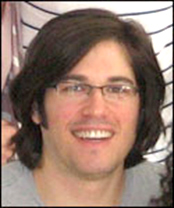Rapid Genetic Interaction Mapping of HIV-1 Host Factors in Cultured T-Cells

Abstract
Mapping genetic interactions (GIs) by simultaneously perturbing pairs of genes is a powerful tool for understanding complex biological phenomena. While the bulk of genetic interaction data has previously been generated in simpler model organisms such as yeast and bacteria, we recently developed an experimental platform for generating GI maps in mammalian cells using a combinatorial RNAi strategy, and applied this towards the construction of a genetic interaction map of HIV-1 host factors in cultured HeLa (cervical carcinoma) cells. Studying 360 host factors, it is both the largest mammalian GI study yet performed, as well as the first utilizing viral infection as a phenotype. The HeLa HIV infection map yielded robust data, illuminating several novel complexes mediating the early HIV lifecycle, including the EIF3 translation initiation complex, the Cullin-2 ubiquitination scaffold, the CNOT complex, and components of tRNA synthetase machinery. However, this first HIV GI map had several disadvantages, including the high cost and low throughput of microplate-based screening (>1,400 384-well dishes were used), as well as the necessity to use genetically tractable HeLa cells instead of a more HIV-relevant T-cell line. To improve upon this screen, I now propose a new screening methodology for viral genetic interaction mapping, utilizing pooled CRISPRInterference (CRISPRi) libraries with an engineered T-cell line to perform cost-effective, scalable viral GI screens. The key to this approach is an optimized cell sorting protocol, utilizing magnetic beads to rapidly enrich hundreds of millions of HIV infected cells using a scalable, high-throughput approach.